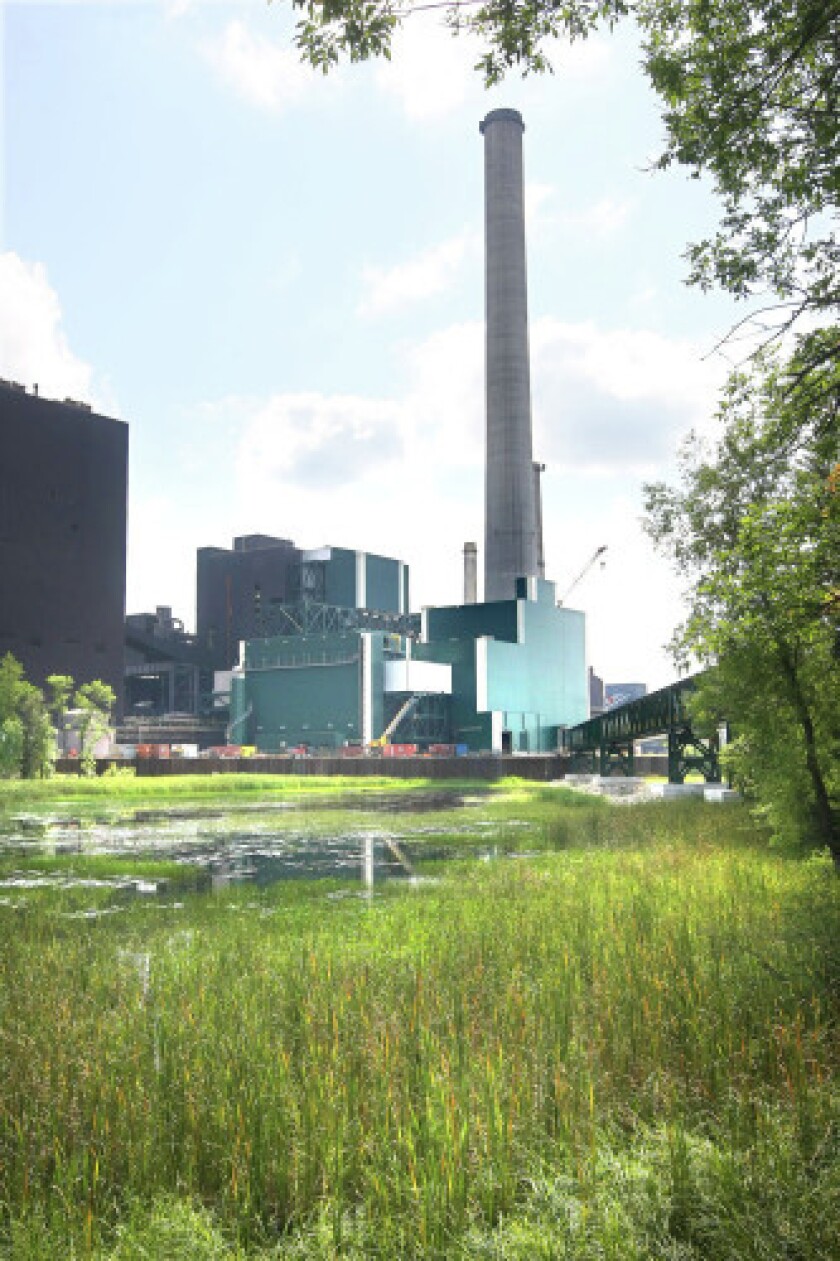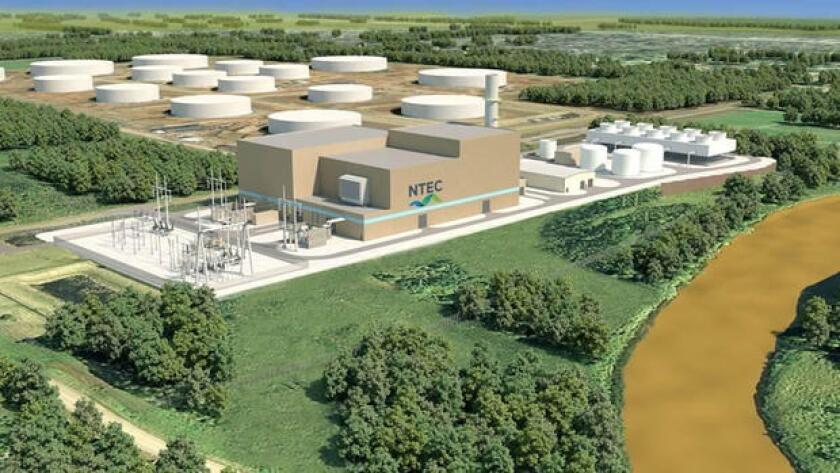Minnesota Power will be coal-free by 2035 and carbon-free by 2050.
The Duluth-based utility on Tuesday announced it will retire the coal-fired 335-megawatt Unit 3 at its Boswell Energy Center in Cohasset by 2030 and convert the power plant’s 468-megawatt Unit 4 to be coal-free by 2035.
To make up the difference, it’s adding 400 more megawatts of wind and solar by 2035 and transitioning to fuels that produce less carbon.
But by 2050, all energy produced by the company will be “100% carbon-free.”
“We’re committed to doing all that while ensuring the reliable and affordable energy that we know our customers rely on,” said Bethany Owen, president and CEO of Allete, Minnesota Power’s parent company.
ADVERTISEMENT
The plans come as worldwide calls to reduce greenhouse gas emissions to curb climate change intensify.
The company reached 50% renewables in December, and now plans to increase that to 70% by 2030. It will be 80% carbon-free by 2035 and 100% carbon-free by 2050.
"Moving beyond coal at Boswell is an important step forward, but our climate, and our communities, cannot afford more fossil gas plants," Jenna Yeakle, an organizer in Duluth for the Sierra Club, said in a statement to the News Tribune. "Any amount of fossil fuel is too much, and Minnesota Power must pledge not to replace coal units with gas, and to halt the development of the new (Nemadji Trail Energy Center) gas plant."
Yeakle said it's critical the public sees and weighs in on the details of the plan.
The company said it will lay out the plans to the Minnesota Public Utilities Commission in its required integrated resource plan due Feb. 1 . The plan will outline the next 15 years of expected energy demands and sources.
Julie Pierce, Minnesota Power vice president of strategy and planning, said energy demand remains “fairly flat” over the next 15 years for the company, which produces much of its energy for industry customers like taconite mines and paper plants. But if the PolyMet copper-nickel mine begins production near Hoyt Lakes and Babbitt, it could see an increase in demand from that project.
The future of Boswell
Long considered the backbone of Minnesota Power’s system, Boswell units 3 and 4 are the last operating coal-fired units in the company’s portfolio.
Since 2013, the company has retired or converted seven of its nine coal units and replaced them with renewables, dropping from 95% of its energy generation coming from coal power in 2005 to 50% renewable energy today.
ADVERTISEMENT
When Unit 4 becomes coal-free by 2035, it will likely be converted to burn biomass, natural gas, hydrogen or some other "carbon-free or less carbon-intense" fuel to make the transition to fully carbon-free by 2050 easier.
“With our vision, and our now company goal, to be 100% carbon-free, we're going to look at carbon minimizing options, because why would you transition to something that you would then just have to turn around and turn off and in a short amount of time?” Pierce said. “So we’ll be thoughtful about that.”

Environmentalists want the company to go further, faster.
In a November report , the Sierra Club argued Boswell’s coal units should be retired and replaced with renewables, battery storage, energy efficiency and demands a response “by 2029 at the latest.”
“Replacing the Boswell coal plant with clean energy solutions would provide Minnesotans with electricity that is less expensive, equally reliable and with a smaller environmental footprint,” the report said.
So why not sooner? Minnesota Power said it’s doing its due diligence, and that would actually cost more.
ADVERTISEMENT
“Retiring Boswell units sooner would create significant cost increases for customers and put the reliability of our grid and service in jeopardy, we need time to prepare the grid for retirement and enable new technology that will be emerging,” Minnesota Power spokesperson Amy Rutledge said in an email.
Any decision on Boswell could then affect Cohasset and Itasca County, which rely heavily on it for jobs and a tax base.
As Cohasset Mayor Greg Hagy pointed out in a letter to regulators last summe r, Boswell Energy Center employs 170 workers and makes up 70% of the city’s tax base while also making sizable portions of the Itasca County and Grand Rapids school district tax bases.
Asked what effect these changes would have on Boswell employees and the tax base, Owen did not offer specifics, but she did reiterate Minnesota Power’s commitment to both.
“Our employees — my coworkers — are really important to me, personally, and to us as a company ... We’re absolutely committed to close collaboration with Cohassset and other communities that have relied on this tax base,” Owen said.
Nemadji could be 'transformed' by 2050
The proposed Nemadji Trail Energy Center, a $700 million natural gas power plant in Superior that Minnesota Power expects to build with La Crosse-based Dairyland Power Cooperative, remains in the company’s plans.
Company officials hope it will come online by 2025 and be able to produce 535-625 megawatts of power by burning natural gas, which releases carbon dioxide and other greenhouse gases. So come 2050, when the company plans to go carbon-free, Pierce said it wouldn’t be abandoned. Instead, the company intends on converting it to something renewable.
Like Boswell, fuels like hydrogen or “renewable natural gas,” which collects and burns methane from farms or landfills, would be considered for the conversion.
ADVERTISEMENT
“But we'll keep evaluating those and then all the newcomers that come with all the innovation that's taking place in the industry,” Pierce said.
Still, environmental groups have urged the company not to build Nemadji in the first place, arguing it shouldn’t replace one fossil fuel with another. While burning natural gas emits less carbon dioxide than coal to produce the same amount of energy, it also produces methane, a potent greenhouse gas.
JT Haines, a spokesperson for the Minnesota Center for Environmental Advocacy, said Minnesota Power was "glossing over" its plans for Nemadji, which would add pollution to the atmosphere, and cast doubt on whether the company was taking its move to clean energy seriously.
"The urgency of climate change demands action now, not in the last few years before 2050. … We have reliable options now that are cheaper and cleaner,” Haines said in a statement to the News Tribune.

Minnesota Power maintains Nemadji would be needed to provide reliable energy when wind and solar aren’t producing enough.
The Minnesota Supreme Court is still considering whether Minnesota regulators should have conducted an environmental review for Nemadji .
ADVERTISEMENT
More renewables
To make up for the loss of coal-fired energy, Minnesota Power plans to build 400 megawatts of solar and wind — 200 megawatts of each — by 2035.
The solar will likely go on existing Minnesota Power property, with Boswell as “the premier candidate,” Pierce said.
The wind projects may be trickier.
“Wind isn’t tremendous here in northeast Minnesota,” Pierce said. “We might have to go to other lands for that, but we’re looking for an efficient way to bring that forward as well.”

This story originally misstated the percentage of renewables Minnesota Power will have by 2035. It was updated at 9:20 a.m. Jan. 12 with the correct figure. The News Tribune regrets the error.
This story was updated at 11:52 a.m. Jan. 12 with quotes from the Sierra Club and Minnesota Center for Environmental Advocacy. It was originally posted at 9 a.m. Jan. 12.








